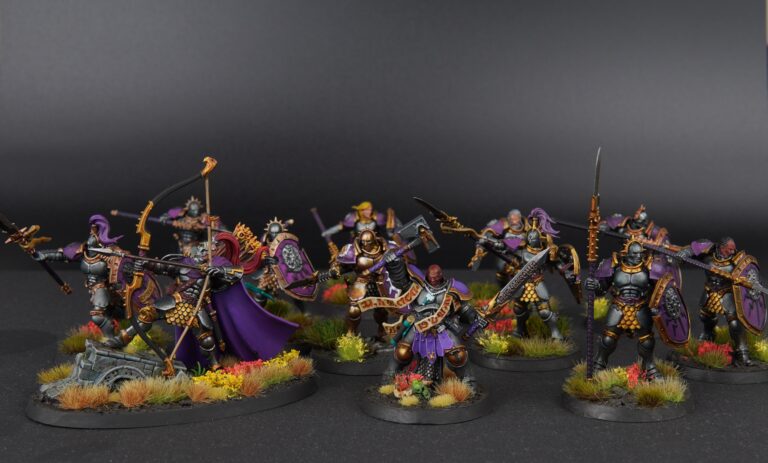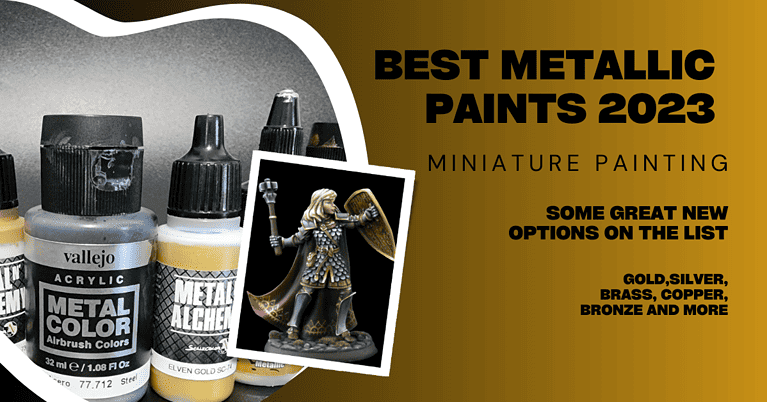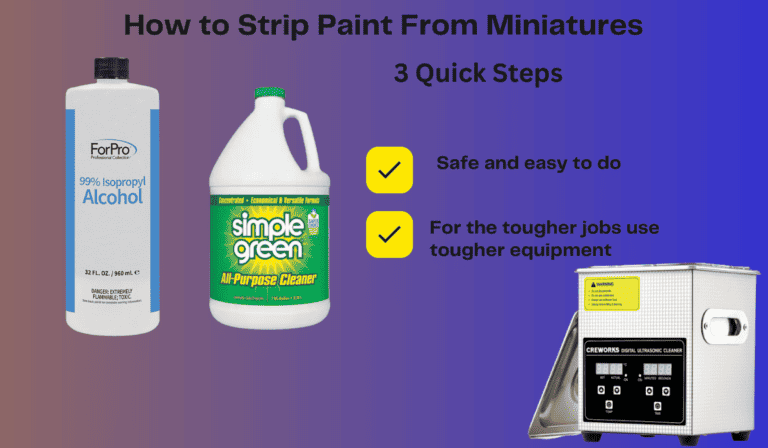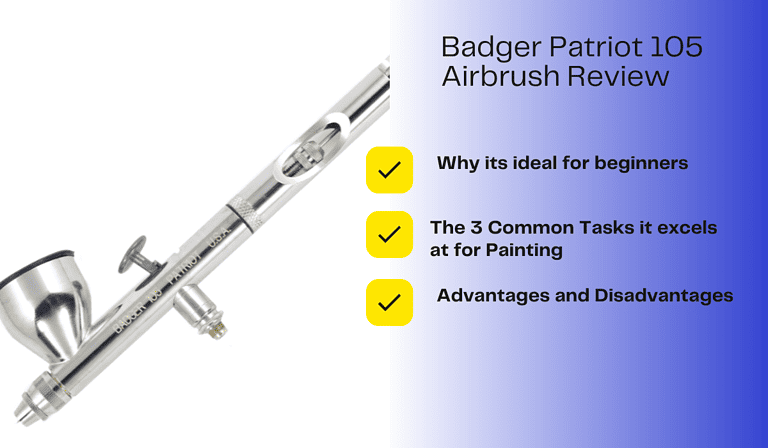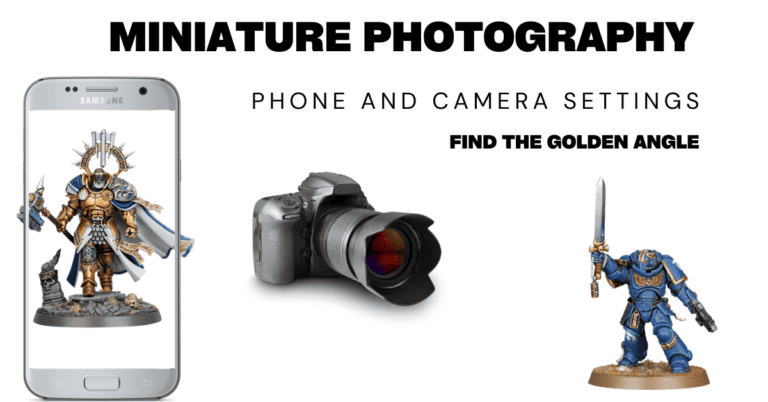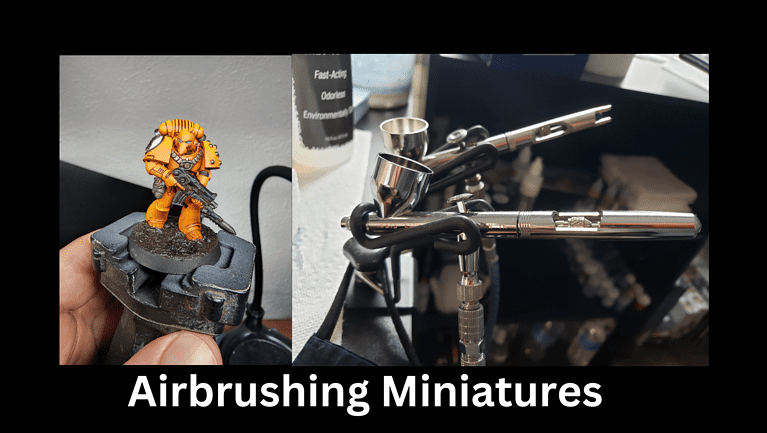How to get a Smooth Base Coat of Paint on Your Miniatures and Models
Smooth finishes and details
One of the first hurdles in Miniature Painting is achieving a smooth clean coat of paint on your Miniature or Model. This article will help you get started.
Takeaways
- Most miniatures are painted with acrylics, and thats what we’ll discuss here.
- Use high quality acrylics where possible, they have finer pigments and thin down much better than cheaper craft paints.
- Smooth base coats start with a clean surface, make sure it’s free of excess plastic or resin and primed.
- Thin your paint and apply with smooth even strokes
- Work section by section. Stay away from paint that is starting to dry.
- Wait for paint to fully dry before another coat is applied.
What you’ll need for smooth coats on your miniature:
- A good quality miniature.
- A decent paint brush
- Water
- A palette of some kind
- Acrylic primer
- Good quality miniature paints
Pretty straight forward. You want a good miniature, which I mention because many cheaper models are a little bit uneven or rough. If that’s the case you can try sanding sticks or a hobby knife to remove excess plastic, metal or resin.
Quality paints is the next one, and they don’t need to be expensive. A typical dropper is 17ml of paint and can cost anywhere from $1 to $4 dollars. They’ll be cheaper in sets. My favorite starter is the Vallejo Basic Set which is $26 as I write this and you get 16 paints. I would caution you against buying a huge set to start. Try different brands first. Vallejo, Citadel, Reaper, Pro Acryl, Ak Interactive, Army Painter, Scale 75 and more.
You’ll want a good acrylic primer, I suggest either Stynylrez, Pro Acryl or Vallejo here.
Then you just need a cup of water for thinning, a palette to hold the paint, and a decent brush. The palette can be something as simple as a paper plate, I used the plastic coated ones for a while when I first started. A brush can be a cheap synthetic that you can buy in sets. If you’re up for something nicer, a good sable brush is ideal.
Steps for Clean Base Coats on Miniatures:
- Clean and prep your miniature. Water and mild dish soap to clean. Scrape or sanding it to create a smooth surface.
- Priming: This is essentially the same as painting it. If you have access to an airbrush you’ll have an easier and quicker time with a smooth coat. If you’re using a brush, apply the primer evenly and don’t disturb it once it’s starting to dry.
- Thin your base coat paints. Put a drop or two of acrylic paint on your palette. Use your brush to dip in a cup of water, and apply the brush full of water to the paint. You’re looking for paint that moves smoothly without resistance, but isn’t watery.
- Apply your base coats smoothly and evenly. You’re looking to work section by section. Avoid disturbing paint once it starts to set.
It’s a simple process that you’ll get better at over time. Just keep in mind a few things: Miniature quality really matters. There are a lot of good brands, and 3D printers are capable of very smooth prints, but the cheaper models are tough to get a smooth base coat on.
Paint quality also matters. Cheap craft paints wont get you as smooth of a coat as a good miniature paint brand will. If you already have some craft paints and you’d like to try them, of course give it a shot. Grab a single bottle of vallejo at some point to compare the two.
Thin your paints. I don’t want you to overthink thinning paints, but it is important to get a good consistency to work with. Avoid thick paint that will leave brush strokes and streaks on the model.
Don’t disturb drying paint. Acrylics dry fairly quickly, especially if you’re working with thinner paints. If the paint is drying and you brush over it, you’ll get nasty streaks and tide marks as you pull up the layers. So work section by section, allowing the prior to dry fully before going over it again.
Video: https://www.youtube.com/watch?v=yZvX7xDGBLg
Other Considerations When Base Coating your Miniatures and Models
Some rule of thumb tips on base coating include:
Work inside out. Meaning start at the deepest layers if possible. If your miniature is wearing a shirt and an open coat on top of it for example, you want to paint the shirt first. Any mistakes you make with getting paint on the coat is very easy to clean up.
Steady hands. Brace your palms together and your elbows on your desk to steady your hands. I use a painting handle to help my grip and it gives me great control.
Brush Control. This is a learned skill and you’ll develop it over time. It’s just the skill of getting the paint where you want it. Learn to move the mini around to get to places you need to paint. Good angles. When to use the paint brush tip as opposed to the sides.
See what you’re doing. Good lighting and a magnifier really helps you see what you’re doing. You’ll get a much cleaner result if you’re accurate.

